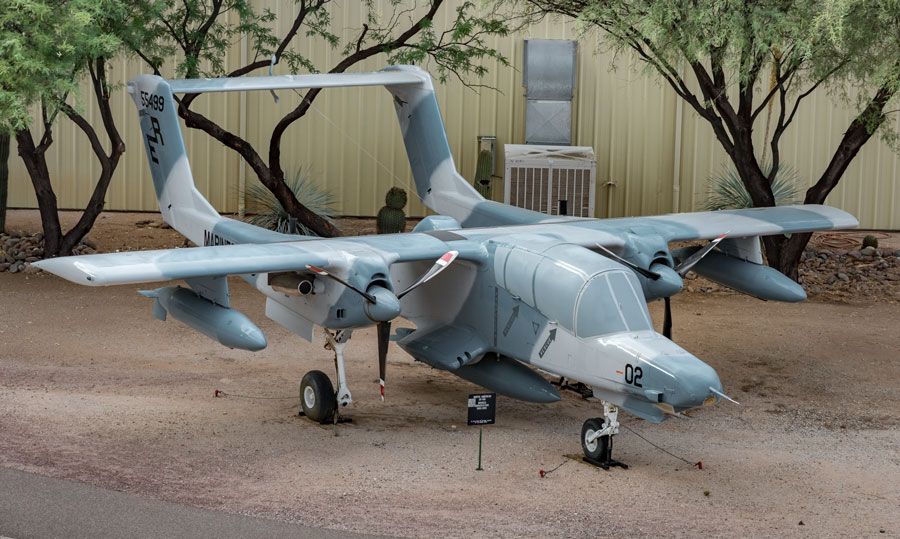North American Rockwell OV-10D Bronco
The OV-10 is a short take-off and landing aircraft designed for the Marine Corps and Air Force as a Forward Air Controller and for close-air-support. The prototype first flew in 1967. The versatility of the design allowed the rear of the fuselage to be used to transport troops or litter patients. The OV-10D eliminated the ability to carry troops, but added more powerful engines and night vision equipment. The Bronco saw extensive service in Vietnam and the first Gulf War. The OV-10 was mostly retired from U.S. military service in the late 1990s with a very few remaining in testing programs. Two of them were reactivated for use in Iraq and Syria in 2015 and although they performed well no further reactivations or deployments were made.
Service History
Built by North American Rockwell as an OV-10A and delivered to the U.S. Marine Corps on February 3, 1969.
1969-1984 No Information available.
Ca 1980 Upgraded to OV-10D.
September 1984 Marine Observation Squadron 2 (VMO-2), Camp Pendleton, California.
Wingspan | 40 ft |
Length | 44 ft |
Height | 15 ft 2 in. |
Weight | 14,444 lbs (loaded) |
Maximum Speed | 288 MPH |
Service Ceiling | 30,000 ft |
Range | 576 miles |
Engines | Two Garrett AiResearch T76-G-420/421 turboprops with 1,040 horsepower |
Crew | 2 |
Manufacturer
North American
Markings
Marine Observation Squadron 2 (VMO-2), Camp Pendleton, California, 1992
Designation
OV-10D
Serial Number
155499
May 1985 Unit moved to Marine Corps Air Station Cherry, North Carolina.
August 1985 To Naval Air Testing Center, Naval Air Station Patuxtent River, Maryland.
August 1986 To Experimental Test Squadron 5 (VX-5), Naval Air Station China Lake, California.
August 1987 To Marine Observation Squadron 2 (VMO-2), Camp Pendleton, California.
June 1993 To Davis-Monthan AFB, Arizona for storage.
June 1995 Loaned to the Pima Air & Space Museum by the National Museum of the Marine Corps.
